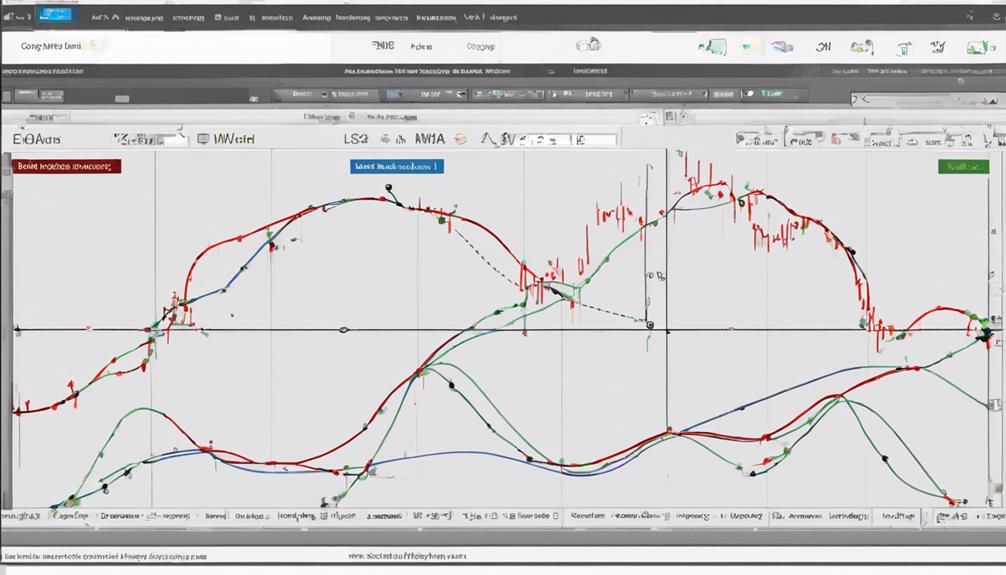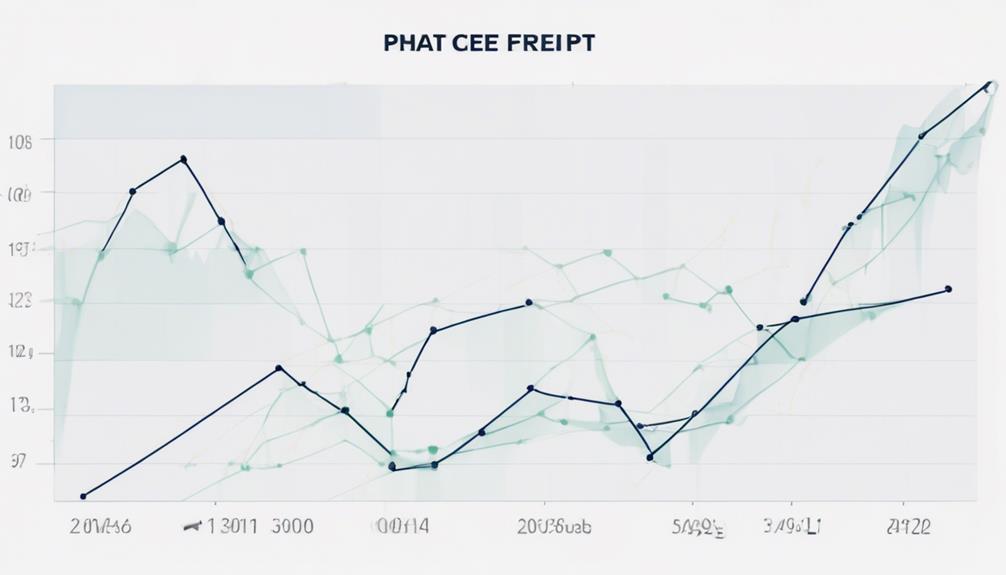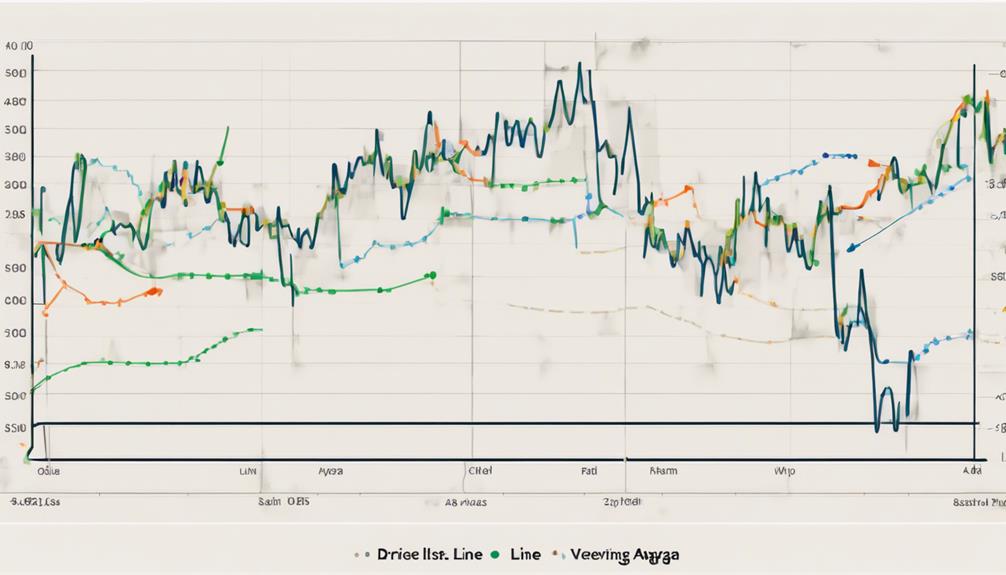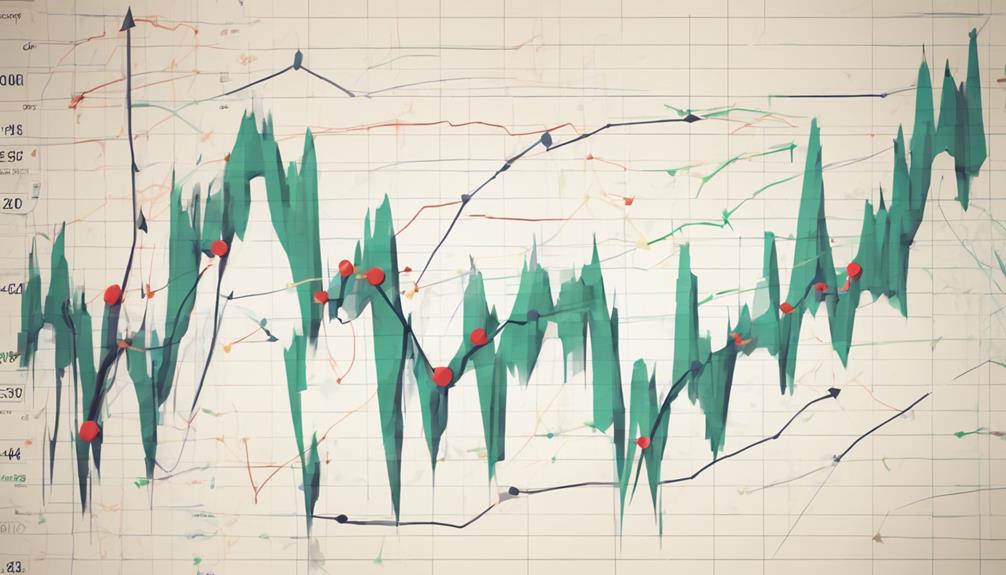Have you ever wondered why moving averages are considered one of the fundamental tools in technical analysis?
The ability of moving averages to smooth out price data and identify trends is invaluable for traders seeking to make informed decisions.
However, there's more to moving averages than just spotting trends – they can also provide crucial insights into potential reversals and market momentum.
Understanding the nuances of moving averages could be the key to unlocking a deeper level of analysis and enhancing your trading strategies.
Importance of Moving Averages
Moving averages play a crucial role in smoothing price fluctuations and revealing underlying market trends in technical analysis. By calculating the average of closing prices over a specific period, moving averages like the simple moving average (SMA) and exponential moving average (EMA) offer valuable insights into market behavior.
SMAs provide a straightforward average of prices, while EMAs give more weight to recent data points, making them more responsive to price changes. Understanding the importance of these averages can help traders identify potential trend reversals, dynamic support, or resistance levels.
Whether applied to stocks, forex, or cryptocurrencies, these versatile tools are essential for analyzing market trends effectively across different timeframes and asset classes.
Types of Moving Averages

An essential aspect to consider when delving into the realm of different moving averages is understanding the Simple Moving Average (SMA).
Here are some key points about the different types of moving averages:
- Exponential Moving Average (EMA): Provides more weight to recent prices, offering a more responsive indicator of current market conditions.
- Weighted Moving Average (WMA): Assigns varying weights to prices, emphasizing specific data points for analysis.
- Hull Moving Average (HMA): Aims to reduce lag and increase responsiveness by utilizing weighted moving averages.
Each type of moving average has its unique characteristics that cater to different trading strategies and market environments. Understanding these distinctions can help you choose the most suitable moving average for your analysis.
Calculating Moving Averages

When calculating moving averages, it's imperative to understand the methodology behind each type and how they influence market analysis.
The Simple Moving Average (SMA) computes the average of specific data points over a set period, assigning equal weight to each point.
In contrast, the Exponential Moving Average (EMA) places more emphasis on recent data, reacting faster to price changes than the SMA.
To calculate a moving average, you sum up the data points over a defined period and then divide by the number of points.
Moving averages can be computed for various timeframes like daily, weekly, or monthly to assess trends over different durations.
Interpreting Moving Averages

Interpreting market trends through the lens of moving averages involves analyzing the relationship between price movements and key moving average indicators. When it comes to interpreting moving averages, consider the following:
- Moving averages crossing above price can signal potential bullish momentum.
- A golden cross, where the short-term moving average crosses above the long-term moving average, may indicate a buy signal.
- Conversely, a death cross, when the short-term moving average crosses below the long-term moving average, could suggest a potential sell-off.
Understanding these signals can help you make informed decisions regarding your trading strategies based on moving average dynamics.
What Are the Benefits of Using Exponential Moving Averages in Understanding Moving Averages?
Exponential moving averages explained suggestions offer traders a nuanced view of market trends by giving more weight to recent prices. This responsiveness to new data helps smooth out volatility, enabling clearer identification of support and resistance levels, and improving the reliability of trading signals.
Practical Application Tips

Transitioning from interpreting moving averages, practical application tips offer valuable insights for effectively utilizing these indicators in your trading strategies.
When using moving averages, consider combining shorter and longer periods on the price chart to capture short-term and long-term trends effectively. Experiment with weighted moving averages to give more importance to recent data points.
Utilize moving averages as dynamic support and resistance levels to identify potential entry and exit points in the market. Be wary of fakeouts when the price crosses the moving average and use additional confirmation indicators.
Remember, moving averages perform best in trending markets, so adjust your strategy for ranging or choppy market conditions accordingly.
Can you explain the difference between regular moving averages and exponential moving averages in more detail?
Regular moving averages calculate the average value of a security’s price over a specific period, whereas exponential moving averages give more weight to the most recent data points. This means that exponential moving averages will react more quickly to price changes. In simple terms, exponential moving averages explained well show a more dynamic trend.
Frequently Asked Questions
What Is the 5 10 20 EMA Strategy?
The 5 10 20 EMA strategy combines three exponential moving averages to track price trends effectively. It involves monitoring crossovers and alignment for entry and exit signals. The 5 EMA reacts swiftly, the 10 EMA smooths, and the 20 EMA offers a broader trend view.
What Is the 5 8 13 21 EMA Strategy?
To grasp the 5 8 13 21 EMA strategy, combine exponential moving averages with periods 5, 8, 13, 21. Watch for crossovers and alignment for buy or sell signals. Swing traders favor this for spotting trend shifts and reversals.
What Is the 5 Moving Average Strategy?
In trading, the 5 moving average strategy involves analyzing five different moving averages of varying time periods. Traders monitor crossovers and relationships between these averages to inform buy or sell decisions, providing a comprehensive view of market trends.
What Is the 9 21 55 EMA Strategy?
To implement the 9 21 55 EMA strategy, utilize three exponential moving averages with periods of 9, 21, and 55 to capture short, medium, and long-term trends. Look for crossover points between these EMAs for potential market direction changes.
Conclusion
To truly master the art of trading, you must embrace the power of moving averages. By understanding their significance, types, calculations, and interpretations, you can make informed decisions that maximize your profits.
Don't just rely on gut instincts – let the data guide your strategies. Dive deep into the world of moving averages, and watch as your trading skills soar to new heights.
The truth is out there – are you ready to uncover it?
